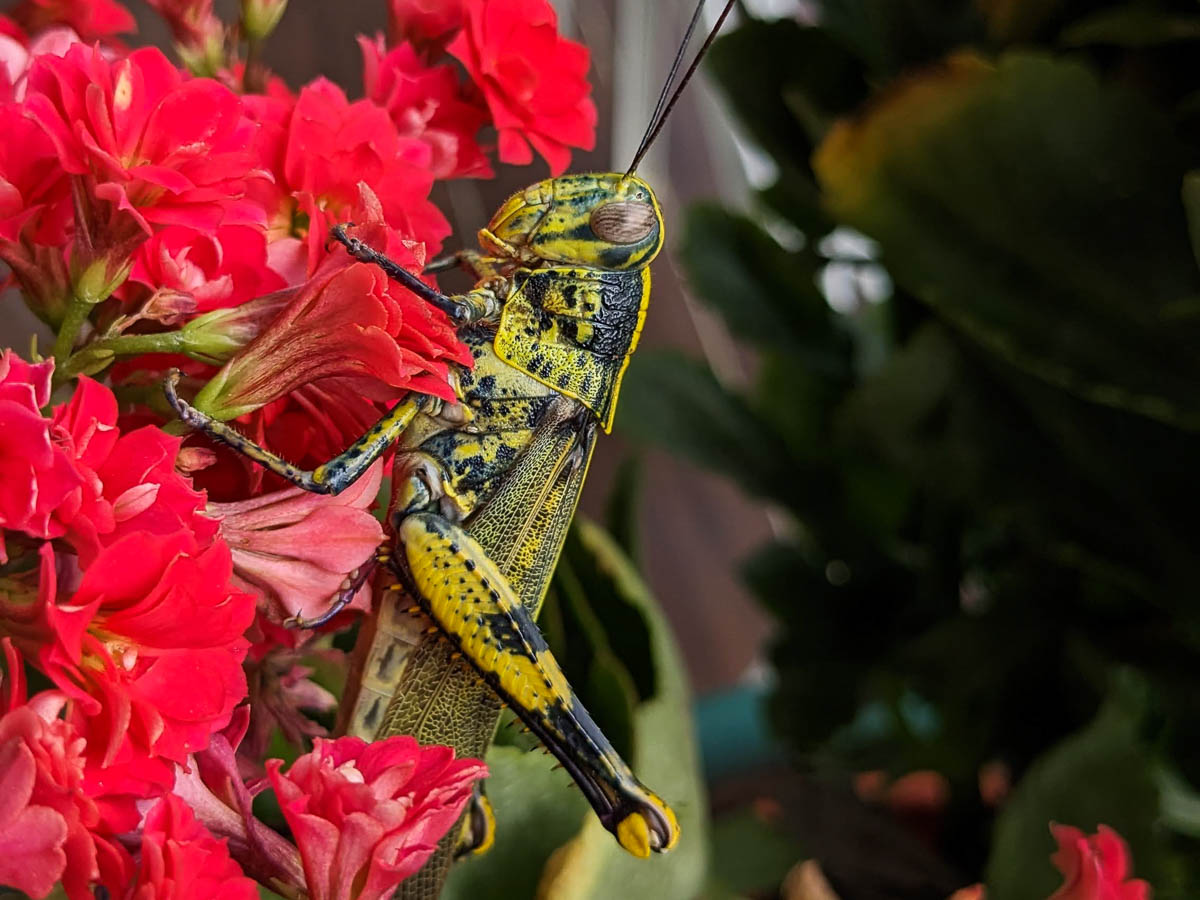Grasshoppers, Crickets and Katydids
Grashoppers, Crickets and Katydids (Order Orthoptera)

Grasshoppers, Crickets and Katydids are chewing insects with strong hind legs that allow them to hop or jump from plant to plant. They are general feeders, but they can quickly eat young plants with soft leaves, such as lettuce and beans. Their chewing mouthparts removes large sections of leaves and flowers, sometimes even destroying the whole plant.
The most common of the three found in Singapore’s gardens are grasshoppers. Grasshoppers are active during the day and can fly or jump quickly through the garden, meaning that you usually only get a glimpse if they are fleeing. Sometimes, you will see them steadily chewing your plants!

Grasshopper outbreaks are sporadic as they need drier conditions to hatch. The females deposit their eggs in dry, undisturbed soil, with each clutch ranging from 20 to more than 100 eggs. Young grasshoppers can thus suddenly appear in large numbers during the dry season and rapidly consume your plants!
Because Singapore is relatively humid, adult grasshoppers generally do not form large swarms to devastate plants like they do in drier climates, particularly during periods of drought.
Symptoms
victorialim.jpg)
Grasshoppers leave behind waxy bite marks with smooth margins. They are not host-specific; hence bite marks can appear on any plant, especially on younger leaves and shoots.
Preventive and control measures:
Mechanical control methods like using netting or cloches to protect young plants will protect your plants from chewing insects in general.
If the population is small, pick out the grasshoppers by hand and kill or release them far away from your garden.
Onion, garlic and chili spray can be used as a repellent to deter grasshoppers from feasting on the foliage of your plants. Use chemical controls like these sparingly as they tend to also affect other types of biodiversity.
Encourage predators to establish in your garden by keeping it pesticide-free. Wasps, Birds and dragonflies feed on grasshoppers and can keep their population under control.

